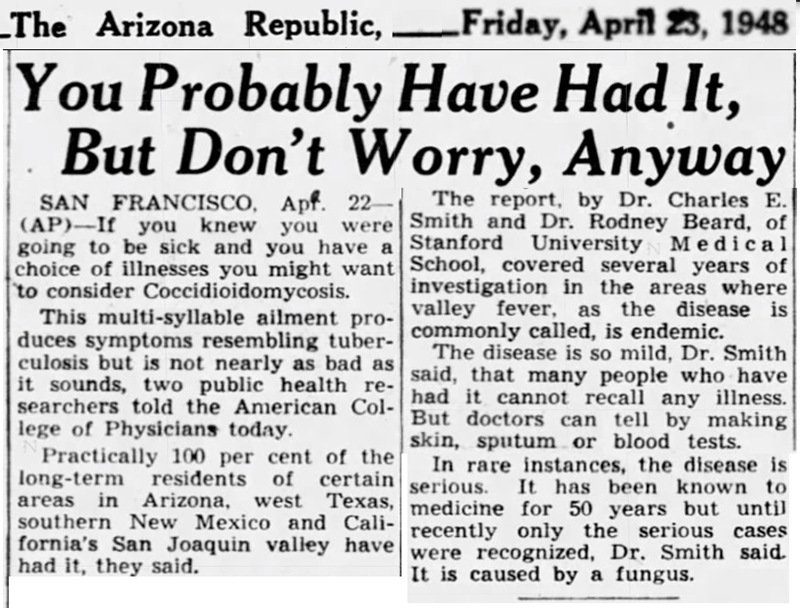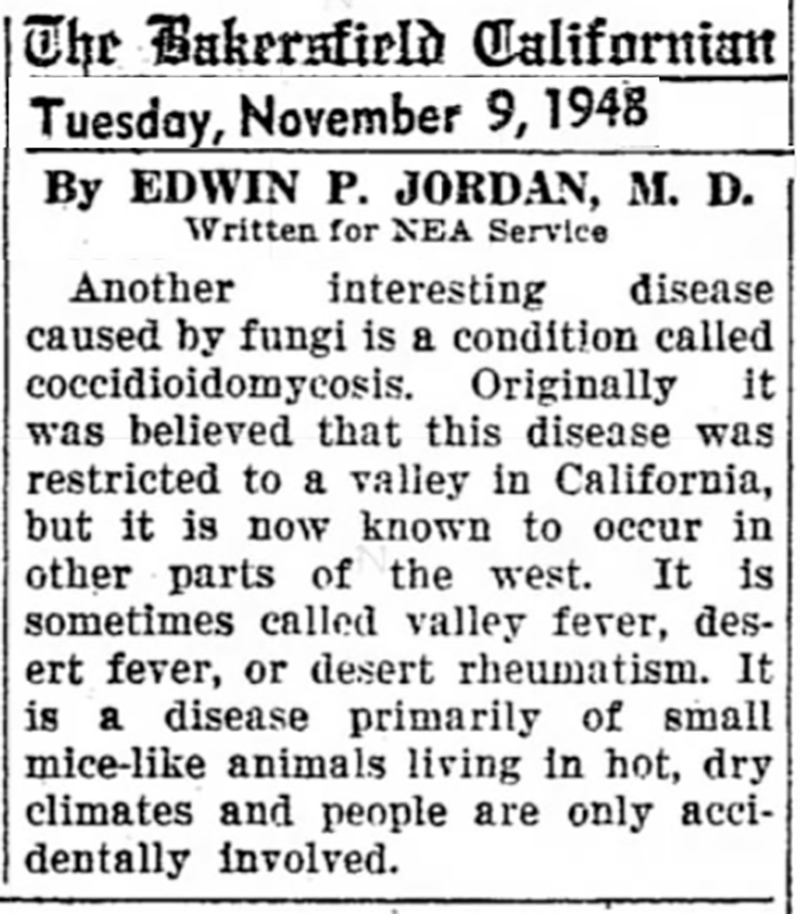|
|

The Distribution of Coccidioidomycosis (Valley Fever) in Southern California.
California Medicine, Vol. 73 (4), pp. 317-21 | October 1950.
|
Abstract.
Los Angeles County General Hospital records indicated that cases had originated near Canoga Park in the San Fernando Valley and suggested this region as an endemic focus. Seven patients with coccidioidomycosis [Valley Fever] were subsequently admitted to the Los Angeles County General Hospital in the fall of 1948 from a Los Angeles County probation camp near Saugus [Camp 4, Bouquet Canyon]. These observations led to the organization of serial skin test and serial complement fixation test surveys in three probation camps within the county, and also to coccidioidin test surveys in Canoga Park and Newhall high schools. A similar survey in Los Angeles High School, located within the city of Los Angeles, was organized as a control. * * * In coccidioidin skin test surveys among persons of high school age in Saugus, Canoga Park, Banning and Palm Springs areas the average incidence of positive reaction was 15 per cent. Although considerably less than the 68 per cent incidence reported among high school students of Kern County, it is high enough to indicate pockets of relatively high endemicity in Southern California below the San Joaquin Valley. Histoplasmin tests were performed on most of the persons tested with coccidioidin in this survey. The overall incidence of positive reaction in the group was 7.6 per cent. Most of the subjects with positive reaction to histoplasmin gave a history of having previously lived in some area in the central United States where histoplasmosis is known to be endemic. A few subjects who had positive reaction to coccidioidin tests and who had lived in areas known to be endemic for coccidioidomycosis but not for histoplasmosis, also had positive reaction to histoplasmin. However, the induration produced was always smaller than that caused by the coccidioidin reaction, and there was minimal confusion in interpreting the tests.
The 1948 outbreaks of Valley Fever in Saugus and elsewhere, and the subsequent testing for it, do not seem to have been reported in the press. So, instead we offer the following news articles that probably characterize the public's perception of the disease in 1948, to the extent anyone heard of it at all.
Download pdf here.
|
The site owner makes no assertions as to ownership of any original copyrights to digitized images. However, these images are intended for Personal or Research use only. Any other kind of use, including but not limited to commercial or scholarly publication in any medium or format, public exhibition, or use online or in a web site, may be subject to additional restrictions including but not limited to the copyrights held by parties other than the site owner. USERS ARE SOLELY RESPONSIBLE for determining the existence of such rights and for obtaining any permissions and/or paying associated fees necessary for the proposed use.





